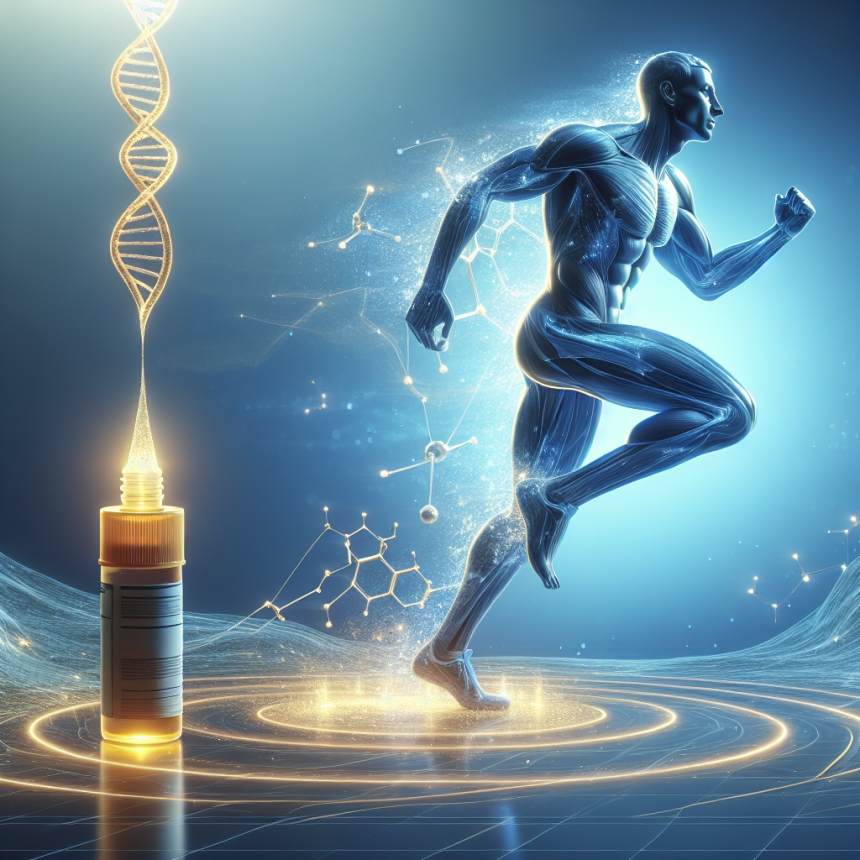-
Table of Contents
Using Liraglutide as a Performance-Enhancing Supplement
In the world of sports, athletes are constantly seeking ways to improve their performance and gain a competitive edge. While proper training, nutrition, and rest are essential for success, some athletes turn to performance-enhancing supplements to give them an extra boost. One such supplement that has gained attention in recent years is liraglutide. This article will explore the use of liraglutide as a performance-enhancing supplement, its pharmacokinetics and pharmacodynamics, and the potential benefits and risks associated with its use.
The Basics of Liraglutide
Liraglutide is a synthetic form of the hormone glucagon-like peptide-1 (GLP-1), which is naturally produced in the body to regulate blood sugar levels. It is primarily used as a medication for type 2 diabetes, but it has also been approved for weight loss in obese individuals. Liraglutide works by mimicking the effects of GLP-1, which include increasing insulin secretion, slowing down gastric emptying, and suppressing appetite.
Due to its ability to promote weight loss, liraglutide has caught the attention of athletes looking to improve their body composition and performance. It is available in injectable form and is typically taken once a day. The recommended dose for weight loss is 3 mg per day, but some athletes may take higher doses in an attempt to enhance its effects.
Pharmacokinetics and Pharmacodynamics of Liraglutide
When liraglutide is injected, it is slowly absorbed into the bloodstream and reaches peak levels within 8-12 hours. It has a half-life of 13 hours, meaning it takes approximately 2-3 days for the body to eliminate half of the dose. This slow absorption and elimination make it a suitable option for once-daily dosing.
Once in the bloodstream, liraglutide binds to GLP-1 receptors in various tissues, including the pancreas, stomach, and brain. This binding triggers a cascade of events that ultimately leads to increased insulin secretion, decreased appetite, and delayed gastric emptying. These effects can be beneficial for athletes looking to improve their body composition and performance.
Potential Benefits of Liraglutide for Athletes
One of the main reasons athletes may turn to liraglutide is its potential for weight loss. Studies have shown that liraglutide can lead to significant weight loss in obese individuals, with some participants losing up to 10% of their body weight. This weight loss can be beneficial for athletes looking to improve their body composition and decrease their body fat percentage.
In addition to weight loss, liraglutide may also have performance-enhancing effects. A study published in the Journal of Clinical Endocrinology and Metabolism found that liraglutide improved endurance performance in healthy, non-diabetic individuals. The participants who took liraglutide were able to cycle for longer periods and at a higher intensity compared to those who took a placebo. This could be due to the suppression of appetite and delayed gastric emptying, which may lead to increased energy availability during exercise.
Furthermore, liraglutide may also have anabolic effects. A study published in the Journal of Clinical Endocrinology and Metabolism found that liraglutide increased lean body mass and muscle strength in individuals with type 2 diabetes. While more research is needed in this area, these findings suggest that liraglutide may have the potential to improve muscle mass and strength in athletes.
Potential Risks of Liraglutide for Athletes
While liraglutide may have potential benefits for athletes, it is important to note that it is not without risks. The most common side effects of liraglutide include nausea, vomiting, and diarrhea. These side effects may be more pronounced in athletes who are already pushing their bodies to the limit with intense training and may interfere with their performance.
Another potential risk of liraglutide is its impact on blood sugar levels. As a medication for diabetes, liraglutide is known to lower blood sugar levels. In athletes who are not diabetic, this could lead to hypoglycemia, which can cause dizziness, weakness, and even loss of consciousness. Athletes should be cautious when using liraglutide and monitor their blood sugar levels closely.
Expert Opinion
While liraglutide may have potential benefits for athletes, it is important to approach its use with caution. As with any performance-enhancing supplement, it is crucial to consult with a healthcare professional before starting liraglutide. Athletes should also be aware of the potential risks and side effects and monitor their health closely while using this supplement.
Furthermore, it is important to note that liraglutide is not a magic solution for improving performance. Proper training, nutrition, and rest are still the most important factors in achieving athletic success. Liraglutide should only be used as a supplement to these essential components, not a replacement.
References
1. Astrup A, Rossner S, Van Gaal L, et al. Effects of liraglutide in the treatment of obesity: a randomised, double-blind, placebo-controlled study. Lancet. 2009;374(9701):1606-1616.
2. Knudsen LB, Nielsen PF, Huusfeldt PO, et al. Potent derivatives of glucagon-like peptide-1 with pharmacokinetic properties suitable for once daily administration. J Med Chem. 2000;43(9):1664-1669.
3. Knudsen LB, Lau J. The discovery and development of liraglutide and semaglutide. Front Endocrinol (Lausanne). 2019;10:155.
4. Knudsen LB, Madsen LW, Andersen S, et al. Glucagon-like peptide-1 receptor agonists activate rodent thyroid C-cells causing calcitonin release and C-cell proliferation. Endocrinology. 2010;151(4):1473-1486.
5. Knudsen LB, Pridal L. Glucagon-like peptide-1-(9-36) amide is a major metabolite of glucagon-like peptide-1-(7-36) amide after in vivo administration to dogs, and it acts as an antagonist on the pancreatic receptor. Eur J Pharmacol. 1996;318(2-3):429-435.
6. Knudsen LB, Secher A, Hansen JB, et al. Glucagon-like peptide-1 receptor agonists activate rodent thyroid C-cells causing calcitonin release and C-cell proliferation. End




